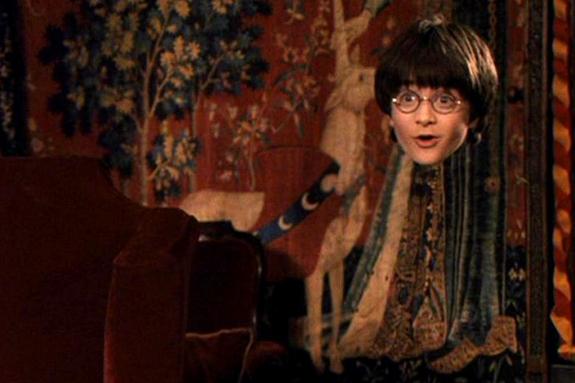
Updated at 10:53 a.m. ET.
A new invisibility cloak for data can make information vanish by creating holes in time, new research suggests.
The researchers, who describe their work today (June 5) in the journal Nature, found that by tweaking the optical signals in telecommunications fibers, they created a way to essentially mask data sent between a sender and a receiver to outside observers. This isn't the first time researchers have taken a page from Harry Potter: Last year, scientists also demonstrated a similar invisibility cloak.
But the new "time cloak" can create many time holes in rapid succession, which means masked data could be sent at commercial data speeds, said Martin McCall, a theoretical-optics researcher at Imperial College London who was not involved in the study. [Now You See It: 6 Tales of Invisibility in Pop Culture]
Time cloak
In 2011, McCall proposed the idea of making optical data (information sent through optical fibers) invisible to an outsider by manipulating the light that transmits that data.
The process involves manipulating the flow of photons, or particles of light, in an optical data stream.
Get the world’s most fascinating discoveries delivered straight to your inbox.
"If you consider light as a flow of particles a bit like cars going down a highway, you can imagine that some of the cars at the front of the stream speed up and ones behind slow down so a gap can open up," McCall said.
If data are sent within that gap in time, when the photons eventually change speed to close up the gap, it appears — to an outside observer — as though nothing ever happened.
Last year, Cornell University researcher Alexander Gaeta and his colleagues demonstrated that a time cloak was possible. But that method was able to create short, 12-picosecond time cloaks that were separated by 24 microseconds — meaning a user would have to wait a million times the length of the gap to send any more hidden data. That was much too slow for commercial applications.
Commercial cloak
To attempt to speed up the process, Joseph Lukens, an electrical engineering doctoral candidate at Purdue University, and his colleagues began developing a time cloak that used existing commercial equipment and could transmit optical data at high speeds.
They also employed the principle that light is both a particle and a wave at the same time. In their method, they created a pattern in the traveling light beam so that the wave's peaks were focused on smaller and smaller areas, and the troughs, or dark spots, got bigger and bigger. This time-lensing effect created several spots in time and space where there was zero light, Lukens said.
"By doing this type of interference effect, we focus the light to even smaller points in time," Lukens told LiveScience. "So, in the middle, we have all of our energy focused on very small points, and between them, we have regions where, if something were to happen, it would not be detected because there's no light there to pick it up."
At the end of the path, the researchers would undo the operations so that to an outside observer, it would seem as though the holes never existed.
The new method covers 46 percent of the spots in a cable, through which the optical data runs, with time holes that can be repeated at 12.7 gigabits per second — a speed used in commercial applications.
The new technique could one day be used to create ultrasecure Internet communications, or to foil communications between criminals such as terrorists. On a more mundane level, it could be used to avoid data traffic jams at connection points in networks, Lukens said.
The findings are a significant advance, McCall said.
"It does make it possible to do these things at telecommunication data rates," McCall told LiveScience. "And as we all know, once the tabletop demonstration has been shown, it's then a matter of technology — the miniaturization, the efficient system engineering — tend to follow."
Editor's Note: This article has been corrected to note that the idea of a time cloak was first proposed by Martin McCall in 2011, not 2006.
Follow Tia Ghose on Twitter and Google+. Follow LiveScience @livescience, Facebook & Google+. Original article on LiveScience.com.

Tia is the editor-in-chief (premium) and was formerly managing editor and senior writer for Live Science. Her work has appeared in Scientific American, Wired.com, Science News and other outlets. She holds a master's degree in bioengineering from the University of Washington, a graduate certificate in science writing from UC Santa Cruz and a bachelor's degree in mechanical engineering from the University of Texas at Austin. Tia was part of a team at the Milwaukee Journal Sentinel that published the Empty Cradles series on preterm births, which won multiple awards, including the 2012 Casey Medal for Meritorious Journalism.


